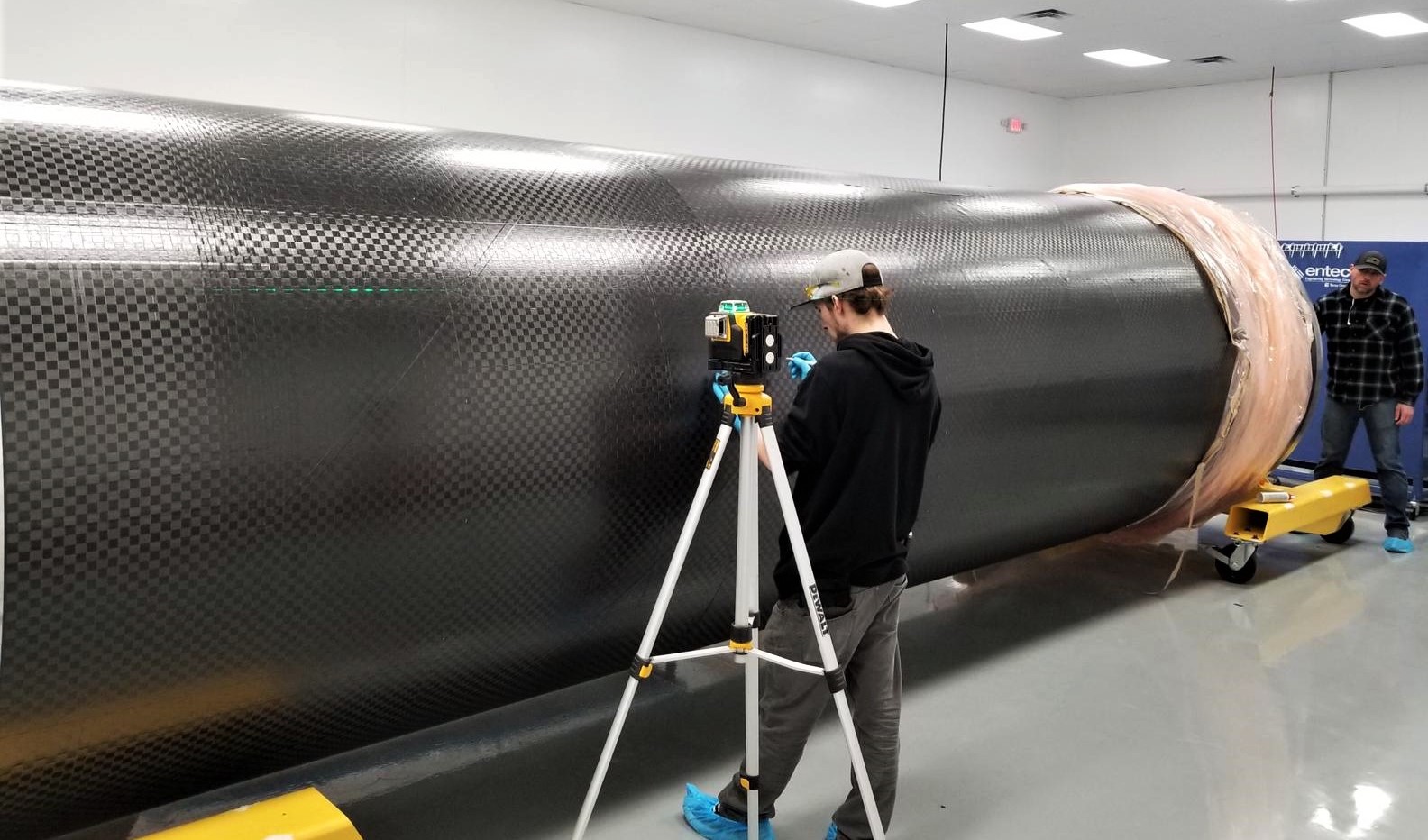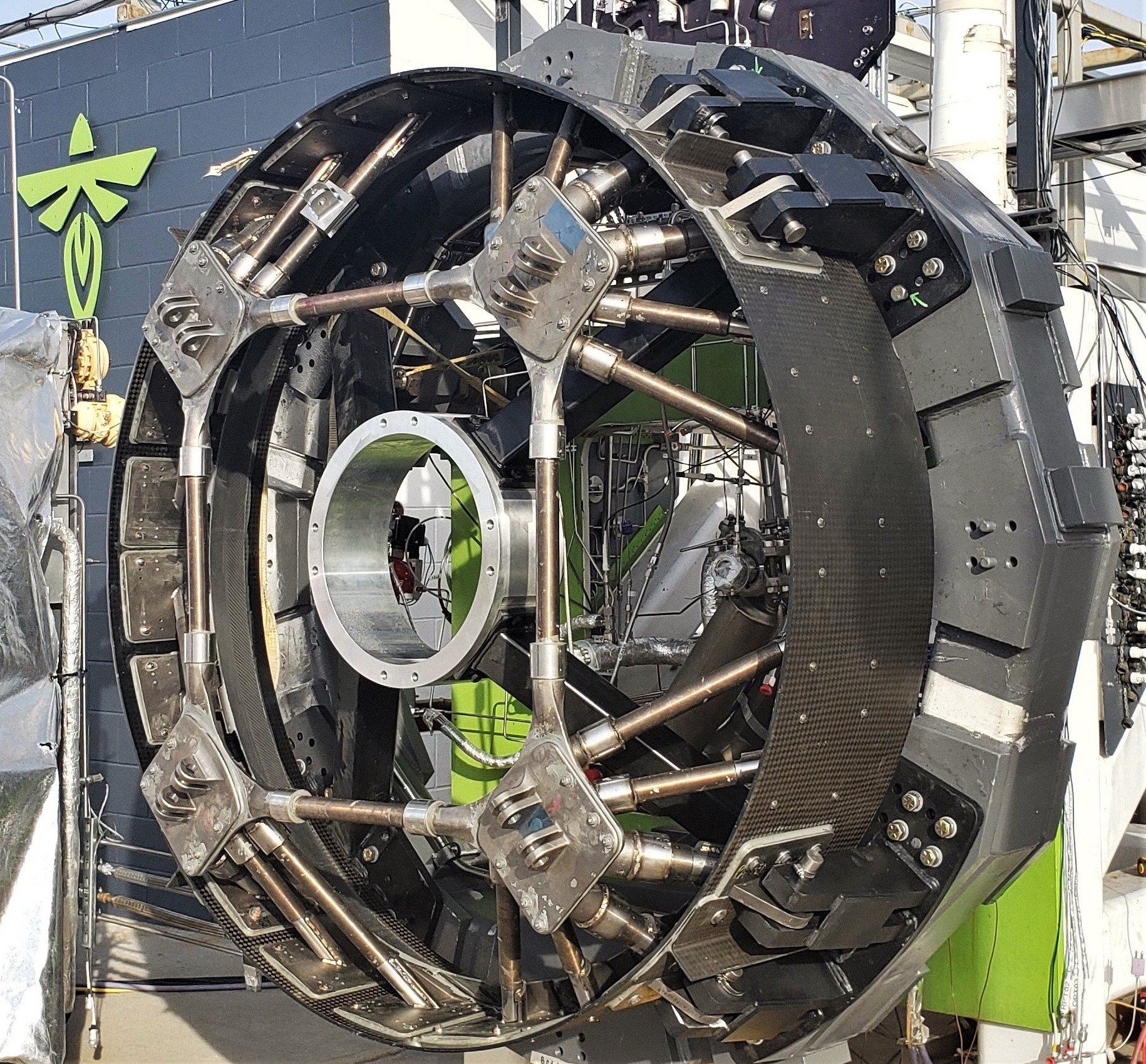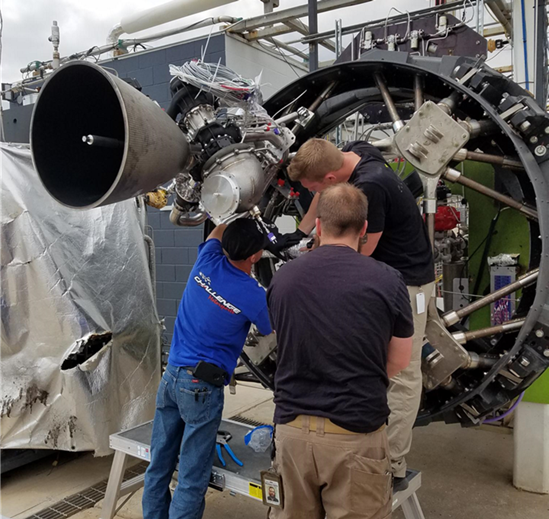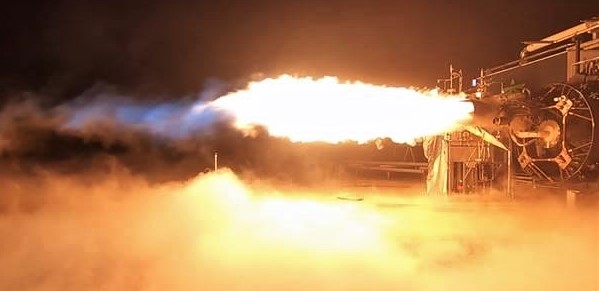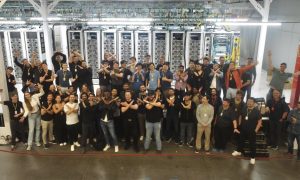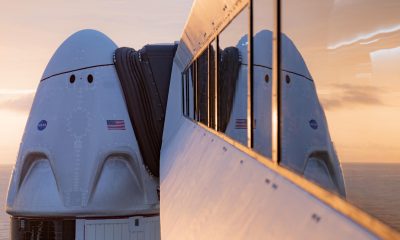News
DeepSpace: Firefly set for smallsat industry’s second place trophy, Rocket Lab leads the pack

This is a free preview of DeepSpace, Teslarati’s new member-only weekly newsletter. Each week, I’ll be taking a deep-dive into the most exciting developments in commercial space, from satellites and rockets to everything in between. Sign up for Teslarati’s newsletters here to receive a preview of our membership program.
In the race to a field dedicated smallsat launch vehicles, New Zealand startup Rocket Lab has already won first place, a fact that has been discussed several times in past Deep Space issues. After completing its first launch of 2019 on March 28th, Rocket Lab’s Electron rocket is ready for another mission as early as May 4th, a good sign for the company’s planned monthly launch cadence.
Despite Rocket Lab’s major success, there is plenty of room for additional competitors and/or complementary vehicles. Electron’s maximum payload hovers around ~225 kg (500 lb) to low Earth orbit (LEO), limiting its usefulness for any payloads that are larger than truly tiny satellites or in need of higher orbits. Also discussed on DeepSpace, there are 10+ serious startups with funding and hardware in work attempting to build said smallsat launch vehicles, ranging from the extremely tiny (Vector: 60 kg to LEO) to much larger rockets from companies like Relativity, ABL Space, and more. Firefly Space, however, is the startup that has arguably broken away from the pack in the last few months, firmly setting itself up to be second in line behind Rocket Lab.
Build, test, qualify
- Firefly’s major leaps forward came in December 2018 and then April 2019, both related to testing the completed upper stage of the company’s Alpha rocket.
- In December, the upper stage ignited for the first time. In April, the same upper stage successfully performed a mission-duration static fire that lasted a full 300 seconds (five minutes), the same length required for a rocket to reach orbit after separating from Alpha’s first stage.
- For any launch vehicle development program, the first successful mission-duration test fire of an integrated rocket stage is arguably one of the most important milestones, second only to the same hardware’s inaugural launch.

- Simultaneously, Firefly began integrated testing of the thrust section and Reaver engines that will be the basis of Alpha’s first stage. The rocket’s Lightning second stage engine has been tested extensively at this point in development, although the stage’s lone engine produces a maximum of ~70 kN (~16,000 lbf) of thrust.
- The booster’s four Reaver engines will each produce ~170 kN (55,000 lbf) of thrust, around three times as much as Lightning. Alpha’s second stage is critical, but its first stage is arguably far more complex.
- Despite the relative power differential, it’s still worth noting that Alpha’s entire first stage (736 kN/166,000 lbf) will be significantly less powerful than a single one of Falcon 9’s nine Merlin 1D engines (941 kN/212,000 lbf).
- Although Alpha is far smaller than rockets like Falcon 9 or Atlas V, it will nominally be capable of launching 1000 kg to an altitude of 200 km (LEO) or ~650 kg to a 500-km sun-synchronous orbit (SSO). This translates to around 4.2X the performance of Rocket Lab’s Electron at 2.5X the cost per launch ($15M vs $6M).
- Assuming no payload capacity is wasted, Alpha could thus be almost 50% cheaper than Electron when judged by cost per kilogram to orbit.
- Of course, this comparison ignores the fact that Firefly will have to far more heavily rely on booking co-passenger satellites to keep Alpha launch prices competitive with Electron.
- If exactly 1000kg or 630kg of cargo can’t be booked each launch, the expendable Alpha’s $15M launch cost will be distributed over less payload, raising costs for each customer. In other words, the competitive advantages of Alpha are almost entirely associated with its ability to launch payloads outside of Electron’s capabilities, as are its potential weaknesses.


Firefly Alpha’s upper stage qualification article (top) and a comparison of a variety of launch vehicles. (Teslarati)
The sweet spot
- In theory, Firefly Alpha’s could find itself in a relatively sweet spot, where the rocket’s launch costs are not so high that dedicated rideshare missions become intractable (i.e. Spaceflight’s SSO-A launch on Falcon 9) but its payload performance is still good enough to provide access to a huge swath of the space launch market.
- Firefly also has plans to develop a heavier launch vehicle based on Alpha, known as Beta. Conceptually equivalent to SpaceX’s Falcon Heavy, Beta would use three Alpha boosters and a significantly upgraded second stage and would be able to launch 4000 kg to LEO or 3000 kg to SSO.
- Regardless of Firefly’s grander aspirations, Alpha is poised to capitalize on the simple fact that it will be the second commercially viable smallsat launch vehicle to begin operations. Alpha’s first orbital launch attempt could occur as early as December 2019, although slips into early 2020 are to be expected.
- At that point, Rocket Lab’s Electron will be the only serious competition on the market. Relativity’s Terran and ABL Space’s RS-1 rockets plan to offer a competitive ~1250 kg to LEO or ~900 kg to SSO, but their launch debuts are tentatively scheduled no earlier than late 2020.
- If Alpha’s development continues smoothly, Firefly could easily have a solid 12-month head start over its similarly-sized competitors,
- Up next for Alpha is a similar campaign of tests focused on the first integrated booster, including tests fires and an eventual mission-duration qualification test.
Mission Updates
- SpaceX’s CRS-17 Cargo Dragon resupply mission has slipped an additional four days from April 30th to May 3rd (3:11 am EDT, 07:11 UTC) after the International Space Station (ISS) began suffering serious (but non-threatening) electrical issues. Additional launch delays could follow if the issue is not resolved in the next few days.
- The first operational Starlink launch remains firmly on track for NET mid-May. According to SpaceX, all Flight 1 satellites are already in Florida, while the FCC approved the company’s modified constellation license – permitting Starlink operations after launch – on April 26th.
- Due to CRS-17’s launch delays, the availability of SpaceX’s LC-40 pad will now likely be the main limiting factor for the Starlink-1 launch date.
- SpaceX’s second West Coast launch of 2019 – carrying Canada’s Radarsat Constellation – is now expected to occur no earlier than mid-June and will reuse Falcon 9 B1051.
- SpaceX’s launch of Spacecom’s Amos-17 spacecraft is now scheduled no earlier than July. Falcon Heavy Flight 3 is tentatively scheduled for launch as early as June 22 – all three boosters should be on site in Florida within the next week or two.
Photo of the Week:

(SpaceX)
The third Falcon Heavy center core – believed to be B1057 – was spotted eastbound in Arizona on April 16th. On April 26th, SpaceX confirmed that the booster completed its acceptance static fire test at the company’s McGregor, TX facilities, a sure sign that all of Falcon Heavy Flight 3’s major components should be in Florida within the next few weeks.
We’ll see you next week.
Not a member? Become a member today to receive DeepSpace each week!
News
Tesla launches in India with Model Y, showing pricing will be biggest challenge
Tesla finally got its Model Y launched in India, but it will surely come at a price for consumers.
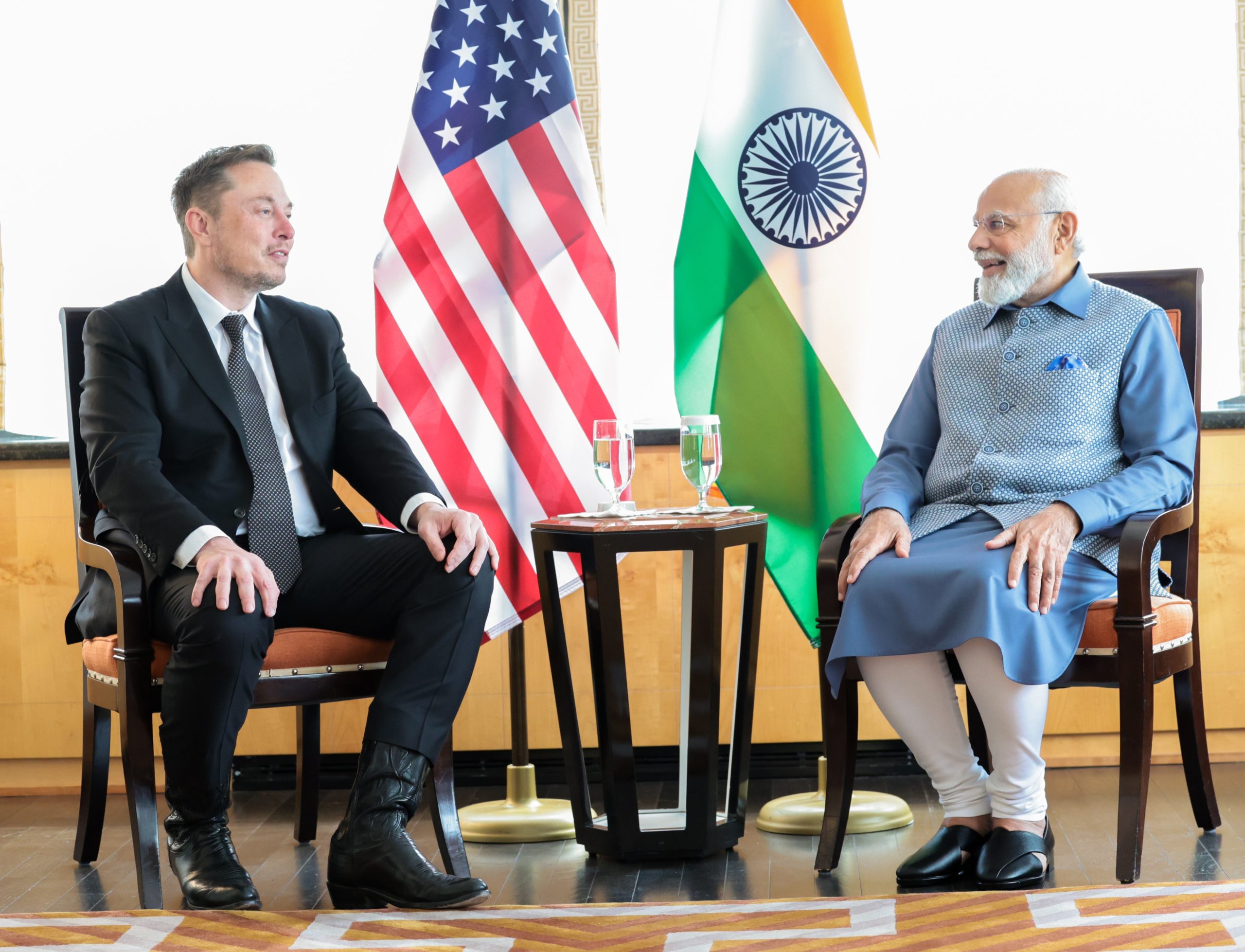
Tesla has officially launched in India following years of delays, as it brought its Model Y to the market for the first time on Tuesday.
However, the launch showed that pricing is going to be its biggest challenge. The all-electric Model Y is priced significantly higher than in other major markets in which Tesla operates.
On Tuesday, Tesla’s Model Y went up for sale for 59,89,000 rupees for the Rear-Wheel Drive configuration, while the Long Range Rear-Wheel Drive was priced at 67,89,000.
This equates to $69,686 for the RWD and $78,994 for the Long Range RWD, a substantial markup compared to what these cars sell for in the United States.
🚨 Here’s the difference in price for the Tesla Model Y in the U.S. compared to India.
🚨 59,89,000 is $69,686
🚨 67,89,000 is $78,994 pic.twitter.com/7EUzyWLcED— TESLARATI (@Teslarati) July 15, 2025
Deliveries are currently scheduled for the third quarter, and it will be interesting to see how many units they can sell in the market at this price point.
The price includes tariffs and additional fees that are applied by the Indian government, which has aimed to work with foreign automakers to come to terms on lower duties that increase vehicle cost.
Tesla Model Y seen testing under wraps in India ahead of launch
There is a chance that these duties will be removed, which would create a more stable and affordable pricing model for Tesla in the future. President Trump and Indian Prime Minister Narendra Modi continue to iron out those details.
Maharashtra Chief Minister Devendra Fadnavis said to reporters outside the company’s new outlet in the region (via Reuters):
“In the future, we wish to see R&D and manufacturing done in India, and I am sure at an appropriate stage, Tesla will think about it.”
It appears to be eerily similar to the same “game of chicken” Tesla played with Indian government officials for the past few years. Tesla has always wanted to enter India, but was unable to do so due to these import duties.
India wanted Tesla to commit to building a Gigafactory in the country, but Tesla wanted to test demand first.
It seems this could be that demand test, and the duties are going to have a significant impact on what demand will actually be.
Elon Musk
Tesla ups Robotaxi fare price to another comical figure with service area expansion
Tesla upped its fare price for a Robotaxi ride from $4.20 to, you guessed it, $6.90.
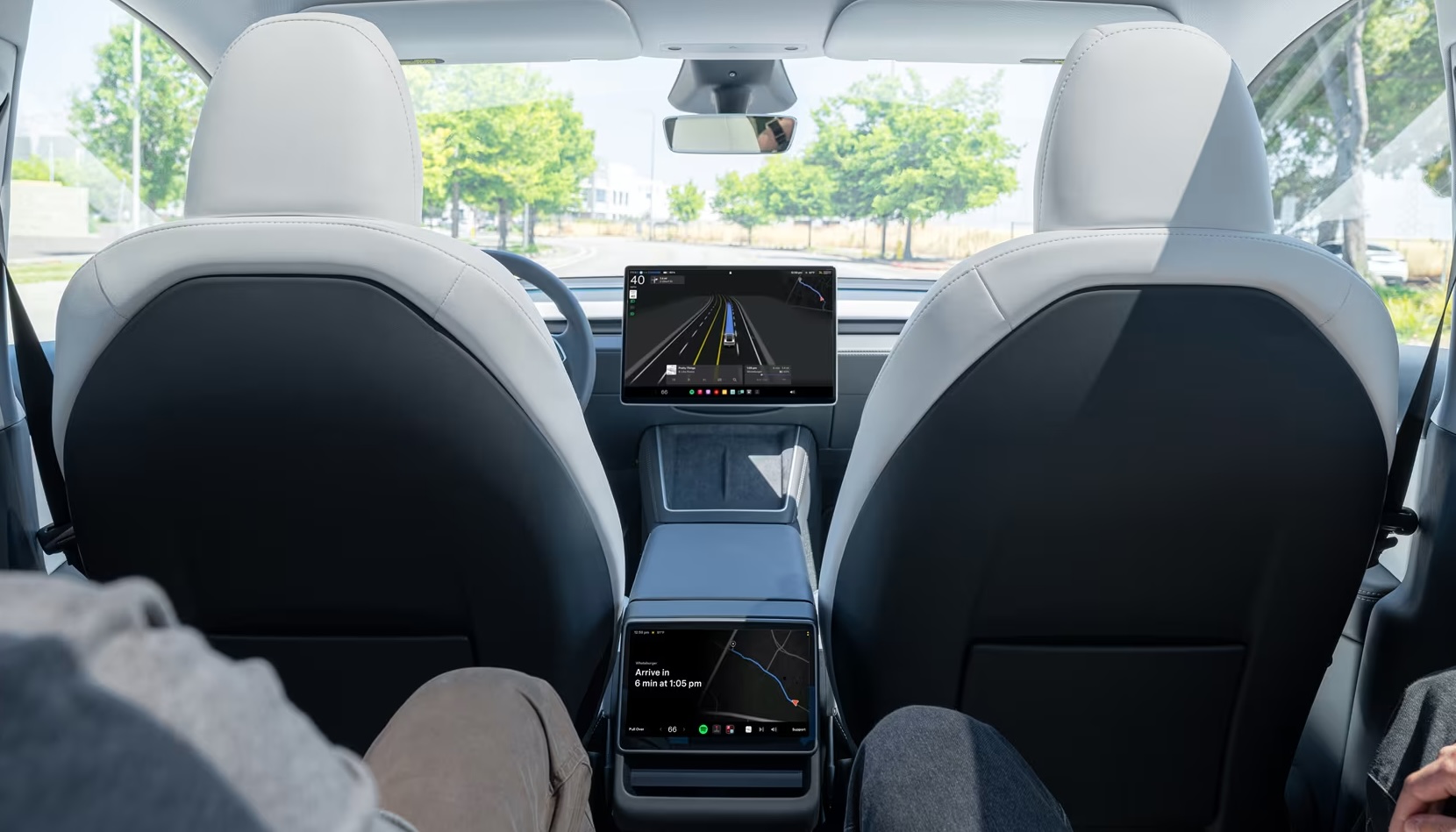
Tesla has upped its fare price for the Robotaxi platform in Austin for the first time since its launch on June 22. The increase came on the same day that Tesla expanded its Service Area for the Robotaxi ride-hailing service, offering rides to a broader portion of the city.
The price is up from $4.20, a figure that many Tesla fans will find amusing, considering CEO Elon Musk has used that number, as well as ’69,’ as a light-hearted attempt at comedy over the past several years.
Musk confirmed yesterday that Tesla would up the price per ride from that $4.20 point to $6.90. Are we really surprised that is what the company decided on, as the expansion of the Service Area also took effect on Monday?
But the price is now a princely $6.90, as foretold in the prophecy 😂
— Elon Musk (@elonmusk) July 14, 2025
The Service Area expansion was also somewhat of a joke too, especially considering the shape of the new region where the driverless service can travel.
I wrote yesterday about how it might be funny, but in reality, it is more of a message to competitors that Tesla can expand in Austin wherever it wants at any time.
Tesla’s Robotaxi expansion wasn’t a joke, it was a warning to competitors
It was only a matter of time before the Robotaxi platform would subject riders to a higher, flat fee for a ride. This is primarily due to two reasons: the size of the access program is increasing, and, more importantly, the service area is expanding in size.
Tesla has already surpassed Waymo in Austin in terms of its service area, which is roughly five square miles larger. Waymo launched driverless rides to the public back in March, while Tesla’s just became available to a small group in June. Tesla has already expanded it, allowing new members to hail a ride from a driverless Model Y nearly every day.
The Robotaxi app is also becoming more robust as Tesla is adding new features with updates. It has already been updated on two occasions, with the most recent improvements being rolled out yesterday.
Tesla updates Robotaxi app with several big changes, including wider service area
News
Tesla Model Y and Model 3 dominate U.S. EV sales despite headwinds
Tesla’s two mainstream vehicles accounted for more than 40% of all EVs sold in the United States in Q2 2025.

Tesla’s Model Y and Model 3 remained the top-selling electric vehicles in the U.S. during Q2 2025, even as the broader EV market dipped 6.3% year-over-year.
The Model Y logged 86,120 units sold, followed by the Model 3 at 48,803. This means that Tesla’s two mainstream vehicles accounted for 43% of all EVs sold in the United States during the second quarter, as per data from Cox Automotive.
Tesla leads amid tax credit uncertainty and a tough first half
Tesla’s performance in Q2 is notable given a series of hurdles earlier in the year. The company temporarily paused Model Y deliveries in Q1 as it transitioned to the production of the new Model Y, and its retail presence was hit by protests and vandalism tied to political backlash against CEO Elon Musk. The fallout carried into Q2, yet Tesla’s two mass-market vehicles still outsold the next eight EVs combined.
Q2 marked just the third-ever YoY decline in quarterly EV sales, totaling 310,839 units. Electric vehicle sales, however, were still up 4.9% from Q1 and reached a record 607,089 units in the first half of 2025. Analysts also expect a surge in Q3 as buyers rush to qualify for federal EV tax credits before they expire on October 1, Cox Automotive noted in a post.
Legacy rivals gain ground, but Tesla holds its commanding lead
General Motors more than doubled its EV volume in the first half of 2025, selling over 78,000 units and boosting its EV market share to 12.9%. Chevrolet became the second-best-selling EV brand, pushing GM past Ford and Hyundai. Tesla, however, still retained a commanding 44.7% electric vehicle market share despite a 12% drop in in Q2 revenue, following a decline of almost 9% in Q1.
Incentives reached record highs in Q2, averaging 14.8% of transaction prices, roughly $8,500 per vehicle. As government support winds down, the used EV market is also gaining momentum, with over 100,000 used EVs sold in Q2.
Q2 2025 Kelley Blue Book EV Sales Report by Simon Alvarez on Scribd
-

 News3 days ago
News3 days agoTesla debuts hands-free Grok AI with update 2025.26: What you need to know
-

 Elon Musk6 days ago
Elon Musk6 days agoxAI launches Grok 4 with new $300/month SuperGrok Heavy subscription
-

 Elon Musk1 week ago
Elon Musk1 week agoElon Musk confirms Grok 4 launch on July 9 with livestream event
-

 News2 weeks ago
News2 weeks agoTesla Model 3 ranks as the safest new car in Europe for 2025, per Euro NCAP tests
-

 Elon Musk2 weeks ago
Elon Musk2 weeks agoxAI’s Memphis data center receives air permit despite community criticism
-

 News5 days ago
News5 days agoTesla begins Robotaxi certification push in Arizona: report
-
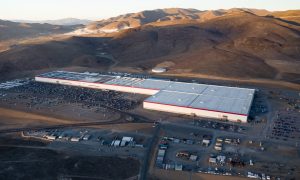
 Elon Musk2 weeks ago
Elon Musk2 weeks agoTesla reveals it is using AI to make factories more sustainable: here’s how
-
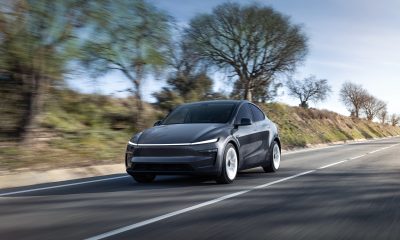
 News2 weeks ago
News2 weeks agoTesla UK sales see 14% year-over-year rebound in June: SMMT data

